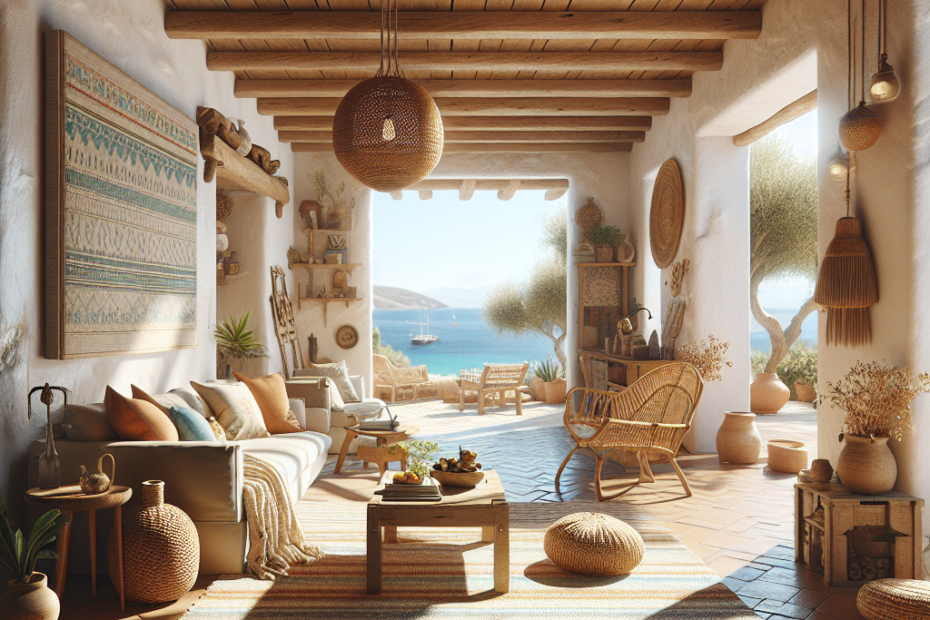The Key Elements of Mediterranean Interior Design
When they think about Mediterranean Design, they likely envision vibrant colors, rustic woodwork, and breezy, sunlit spaces. This interior design style draws inspiration from the coastal regions of countries like Spain, Greece, and Italy, creating a warm and inviting atmosphere that evokes feelings of relaxation and tranquility. The Mediterranean style celebrates nature, craftsmanship, and a harmonious blend of indoor and outdoor living. According to a recent survey by the National Association of Realtors, homes with Mediterranean design elements can increase their resale value by around 5-10% compared to traditional styles (Source: National Association of Realtors, 2023).
Natural Materials and Elements
Mediterranean Design incorporates natural materials extensively. They might notice terracotta floors, stone walls, and wooden beams in a traditional Mediterranean home. These materials help create a rustic, earthy feel. Additionally, many homes include wrought iron elements, which add texture and an old-world charm. Using natural materials not only enhances the aesthetic appeal but also ensures durability and sustainability.
Color Palette Inspired by the Sea and Sky
The typical color palette for Mediterranean Design takes inspiration from the serene colors of the sea and sky. They often see shades of blue, turquoise, and aqua, mixed with earth tones like terracotta, ochre, and olive green. Whites and creams are commonly used as base colors to provide a fresh and airy feel. These colors, when combined, create a space that feels both vibrant and calming.
Textured Walls and Ceilings
Textured surfaces are a key element of Mediterranean Design. They often find stucco or distressed plaster walls, which add depth and character to the interiors. Ceilings are usually adorned with wooden beams or decorative tiles, further enhancing the Mediterranean vibe. These textures play a crucial role in reflecting the traditional craftsmanship found in coastal Mediterranean homes.
Arched Doorways and Windows
Arches are a defining architectural feature in Mediterranean Design. They can see arched doorways, windows, and niches that soften the look of interiors and add graceful curves. These arches are not just stylistic but also practical, as they help to balance light and create a flow between rooms, enhancing the overall openness and fluidity of the space.
Outdoor Living Emphasized
In Mediterranean regions, outdoor living is as important as indoor living. They might notice that homes often feature courtyards, patios, and terraces designed for alfresco dining and relaxation. This design approach brings the outdoors in, taking advantage of the pleasant climate. Natural elements like gardens, fountains, and pergolas with climbing vines enhance this connectivity with nature.
Key Takeaways
- Mediterranean Design uses natural materials such as terracotta, stone, and wood to create a rustic, durable aesthetic.
- The color palette is inspired by the sea and sky with shades of blue, turquoise, and earth tones.
- Textured surfaces and arched architectural features define the style, adding character and balance.
- The design emphasis on outdoor living spaces reflects a connection with nature and an appreciation for the environment.
Mediterranean Design Elements Table
| Elements | Description |
|---|---|
| Natural Materials | Includes stone, terracotta, woods, and wrought iron. |
| Color Palette | Inspired by sea tones like blue and aqua, and earth tones like terracotta and olive green. |
| Textured Surfaces | Walls often feature stucco or distressed plaster for an aged look. |
| Arched Features | Common in doorways and windows, providing a signature look. |
| Outdoor Living | Patios, courtyards, and gardens are integral to the design. |
FAQ
- What is Mediterranean Design best known for?
- How do they incorporate Mediterranean Design into a small space?
- Is Mediterranean Design suitable for all climates?
- How can they add a personal touch to Mediterranean Design?
- Are Mediterranean Design elements sustainable?
Mediterranean Design is best known for its use of natural materials, vibrant color palette, textured surfaces, and a seamless blend of indoor and outdoor living spaces.
They can incorporate this design in a small space by using light colors, natural textures, and incorporating small-scale furniture to maintain a spacious feel.
While it is ideal for warmer climates due to its airy nature, they can adapt Mediterranean Design elements to suit other climates by focusing on textures and colors more suited to their environment.
Add personal touches by incorporating art, textiles, or decor pieces unique to their style, keeping the overall Mediterranean theme in mind.
Many elements like natural materials and open spaces promote sustainability, but they should focus on sourcing eco-friendly products for the best environmental impact.
